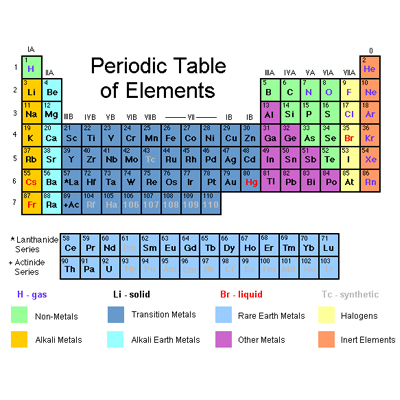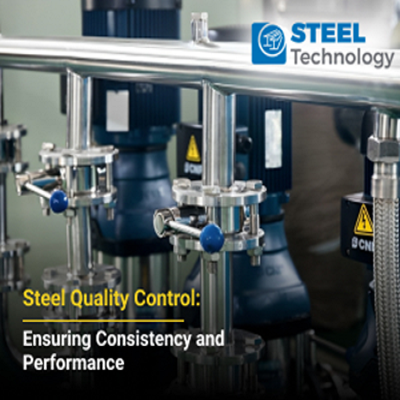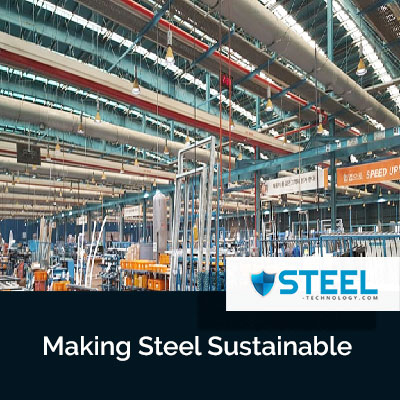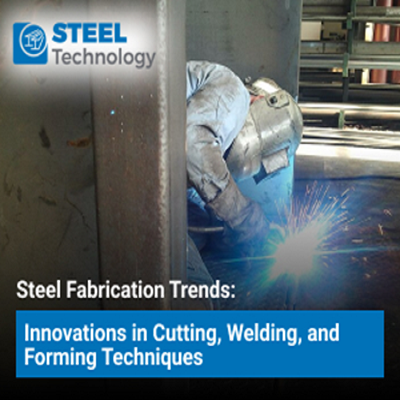Hydraulic Piping Excellence in Steel: Modern Solutions and Strategies
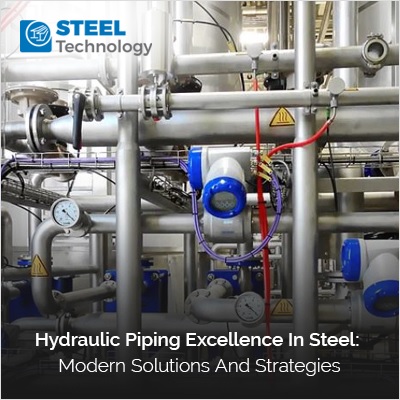
I. Importance of high-quality hydraulic piping
In the steel industry, the importance of high-quality hydraulic piping cannot be understated. Hydraulic systems are at the core of steel plants, powering crucial operations such as material handling, casting, rolling, and forging. Any failure or inefficiency in the hydraulic piping can lead to costly downtime and compromised productivity. That's why steel manufacturers are increasingly investing in advanced hydraulic piping solutions to ensure seamless operations and enhance overall performance.
Modern hydraulic piping systems are designed to withstand the extreme operating conditions of steel plants. They need to handle high pressures, temperature fluctuations, and harsh environments. By using high-quality hydraulic piping materials and components, steel manufacturers can minimize the risk of leaks, fractures, and other issues that can disrupt production. These advanced piping solutions provide the necessary strength, durability, and corrosion resistance required for the demanding applications in the steel industry.
II. Types of hydraulic piping materials
When it comes to hydraulic piping materials, steel manufacturers have several options to choose from. Each material has its own unique properties and advantages, depending on the specific requirements of the hydraulic system. Here are some commonly used hydraulic piping materials in the steel industry:
Carbon steel: Carbon steel pipes are widely used in hydraulic systems due to their high strength, affordability, and ease of fabrication. They are suitable for applications that don't require extreme corrosion resistance.
Stainless steel: Stainless steel pipes offer excellent corrosion resistance, making them ideal for hydraulic systems exposed to aggressive environments or corrosive fluids. They are also known for their high strength and durability.
Duplex stainless steel: Duplex stainless steel pipes combine the benefits of both austenitic and ferritic stainless steels. They provide superior corrosion resistance and high strength, making them suitable for demanding hydraulic applications.
Seamless tubes: Seamless tubes are often preferred in hydraulic piping systems due to their smooth interior surface, which minimizes friction and pressure drop. They are available in various materials, including carbon steel, stainless steel, and alloy steel.
Hydraulic hoses: Hydraulic hoses are flexible tubes made of synthetic rubber or thermoplastic materials. They are used to transmit hydraulic power between components in the system. Hydraulic hoses offer flexibility, ease of installation, and resistance to abrasion and high temperatures.
Choosing the right hydraulic piping material depends on factors such as operating conditions, fluid compatibility, pressure requirements, and budget considerations. Steel manufacturers should consult with experienced hydraulic piping experts to determine the most suitable material for their specific applications.
III. Choosing the right hydraulic piping system for your needs
In addition to selecting the appropriate hydraulic piping material, steel manufacturers also need to consider other factors when choosing a hydraulic piping system. Here are some key considerations:
Operating pressure: The hydraulic piping system should be designed to handle the maximum operating pressure of the hydraulic system. This includes selecting pipes, fittings, and hoses with sufficient pressure ratings.
Fluid compatibility: Hydraulic systems in steel plants often handle various types of fluids, including hydraulic oil, water-glycol, and water-oil emulsions. It is crucial to ensure that the hydraulic piping materials and components are compatible with the specific fluid being used.
Temperature range: Steel plants can experience extreme temperature fluctuations, which can affect the performance and integrity of hydraulic piping. The chosen piping system should be able to withstand the temperature range of the operating environment.
Corrosion resistance: Depending on the operating environment, the hydraulic system may be exposed to corrosive substances such as acids or salts. It is important to select hydraulic piping materials that offer sufficient corrosion resistance to prevent degradation and leaks.
Flexibility and ease of installation: Consideration should be given to the flexibility and ease of installation of the hydraulic piping system. This includes factors such as the availability of pre-fabricated components, ease of routing, and compatibility with existing infrastructure.
By carefully evaluating these factors and consulting with hydraulic piping experts, steel manufacturers can choose the right hydraulic piping system that meets their specific needs and ensures optimal performance.
IV. Benefits of modern hydraulic piping solutions
The adoption of modern hydraulic piping solutions in the steel industry offers numerous benefits for steel manufacturers. These advancements not only enhance the performance and reliability of hydraulic systems but also contribute to improved productivity and cost savings.
Improved efficiency: Modern hydraulic piping solutions are designed to minimize pressure drops and fluid friction, resulting in improved system efficiency. This translates to reduced energy consumption and increased overall productivity.
Enhanced safety: Hydraulic systems in steel plants operate under high pressures and store significant amounts of energy. By using high-quality hydraulic piping materials and components, the risk of leaks, bursts, and other safety hazards can be significantly reduced. This ensures a safer working environment for operators and maintenance personnel.
Reduced downtime: Downtime in steel plants can be costly, impacting production schedules and revenue. Modern hydraulic piping solutions, such as seamless tubes and reliable fittings, help minimize the risk of system failures and unplanned maintenance. This leads to reduced downtime and increased operational efficiency.
Longer service life: The durability and corrosion resistance of modern hydraulic piping materials contribute to longer service life and reduced maintenance requirements. This not only reduces costs associated with repairs and replacements but also improves the overall lifespan of the hydraulic system.
Optimized system performance: Advanced hydraulic piping solutions enable steel manufacturers to optimize the performance of their hydraulic systems. By choosing the right materials and components, manufacturers can achieve the desired flow rates, pressure levels, and system response times.
The benefits of modern hydraulic piping solutions go beyond individual components. When integrated into a well-designed hydraulic system, these advancements have a synergistic effect, maximizing the overall efficiency and reliability of the system.
V. Strategies for achieving hydraulic piping excellence
To achieve hydraulic piping excellence in the steel industry, steel manufacturers employ various strategies that encompass design, installation, maintenance, and continuous improvement. Here are some key strategies adopted by industry leaders:
Preventive maintenance programs: Regular maintenance is crucial for hydraulic systems to ensure optimal performance and prevent unexpected failures. Steel manufacturers implement preventive maintenance programs, including routine inspections, fluid analysis, and component replacements, to identify and address potential issues before they escalate.
Advanced monitoring systems: The use of advanced monitoring systems, such as pressure sensors, temperature sensors, and flow meters, helps steel manufacturers monitor the performance of their hydraulic systems in real-time. This allows for proactive maintenance, early fault detection, and optimization of system parameters.
Custom-designed piping solutions: Steel manufacturers often opt for custom-designed hydraulic piping solutions tailored to their specific requirements. This involves collaborating with experienced hydraulic piping experts to design systems that optimize flow, minimize pressure drops, and ensure proper fluid distribution.
Training and knowledge sharing: Continuous training and knowledge sharing among operators and maintenance personnel are essential for achieving hydraulic piping excellence. Steel manufacturers invest in training programs to educate their employees on hydraulic system operation, maintenance best practices, and safety protocols.
Collaboration with hydraulic piping experts: Collaborating with hydraulic piping experts is crucial for steel manufacturers seeking to enhance their hydraulic systems. These experts possess the knowledge, experience, and industry insights necessary to design, install, and maintain hydraulic piping systems that meet the unique requirements of steel plants.
By implementing these strategies, steel manufacturers can achieve hydraulic piping excellence, ensuring reliable and efficient hydraulic systems that support their steel production processes.
VI. Common challenges in hydraulic piping installation and maintenance
The installation and maintenance of hydraulic piping systems in steel plants can be challenging due to the complex nature of the applications and the demanding operating conditions. Here are some common challenges that steel manufacturers may encounter:
Space constraints: Steel plants often have limited space for hydraulic piping installation, especially in existing facilities. This can make routing and installation challenging, requiring innovative solutions such as compact fittings and flexible hoses.
High-pressure requirements: Hydraulic systems in steel plants operate under high pressures, which can pose challenges in terms of selecting suitable piping materials and ensuring proper sealing. Proper installation techniques and the use of high-quality fittings are essential to prevent leaks and system failures.
Corrosion and wear: Steel plants are known for their harsh operating environments, which expose hydraulic piping systems to corrosive substances, abrasion, and wear. Steel manufacturers need to select materials and coatings that provide adequate corrosion resistance and durability to withstand these conditions.
Fluid contamination: Contamination of hydraulic fluids can lead to system failures and reduced performance. Steel manufacturers need to implement effective filtration systems and establish proper fluid maintenance practices to ensure optimal hydraulic system operation.
Compatibility and interchangeability: Steel plants often have a wide range of hydraulic equipment and components from different manufacturers. Ensuring compatibility and interchangeability between different hydraulic piping systems can be a challenge, requiring careful selection of standardized components.
By being aware of these challenges and working closely with hydraulic piping experts, steel manufacturers can overcome them and ensure the reliable and efficient operation of their hydraulic systems.
VII. Importance of regular inspection and maintenance of hydraulic piping
Regular inspection and maintenance of hydraulic piping systems are critical for the longevity, efficiency, and safety of steel plant operations. It is important to establish a comprehensive maintenance schedule that includes the following activities:
Visual inspections: Regular visual inspections of hydraulic piping systems allow for the identification of any visible signs of leaks, corrosion, wear, or other issues. Visual inspections should be carried out by trained personnel and documented for reference.
Fluid analysis: Regular fluid analysis helps monitor the condition of hydraulic fluids, detect contamination, and identify potential problems before they cause system failures. Fluid samples should be taken periodically and analyzed for particle count, viscosity, acidity, and other relevant parameters.
Pressure testing: Periodic pressure testing of hydraulic piping systems ensures that they can withstand the maximum operating pressures without leaks or failures. Pressure tests should be conducted according to industry standards and documented for compliance.
Component replacements: Over time, hydraulic piping components such as hoses, fittings, and seals may wear out or degrade. Regular component replacements based on manufacturer recommendations and wear indicators help prevent unexpected failures and maintain system reliability.
System flushing: System flushing involves purging hydraulic piping systems of contaminants, sludge, and degraded fluids. This helps maintain system cleanliness and prevent the accumulation of debris that can clog valves, filters, and other components.
By adhering to a regular inspection and maintenance schedule, steel manufacturers can identify potential issues early on, address them promptly, and ensure the optimal performance and longevity of their hydraulic piping systems.
VIII. Hiring professional hydraulic piping services
Given the complexity and criticality of hydraulic piping in the steel industry, it is advisable for steel manufacturers to seek the assistance of professional hydraulic piping services. These experts have the knowledge, experience, and specialized equipment required to design, install, and maintain hydraulic piping systems that meet the unique needs of steel plants.
Professional hydraulic piping services offer the following advantages:
Expertise: Hydraulic piping experts possess in-depth knowledge of hydraulic systems, materials, and industry best practices. They can provide valuable insights and recommendations to ensure the optimal design and performance of hydraulic piping systems.
Efficiency: Hiring professional hydraulic piping services saves time and resources for steel manufacturers. These experts have the necessary equipment and expertise to carry out installation and maintenance tasks efficiently, minimizing downtime and disruptions to steel plant operations.
Quality assurance: Professional hydraulic piping services adhere to industry standards and best practices, ensuring the highest quality of workmanship. This reduces the risk of system failures, leaks, and other issues that can compromise safety and productivity.
Compliance: Hydraulic piping services are well-versed in relevant regulations and safety standards. By working with these professionals, steel manufacturers can ensure compliance with industry requirements and minimize the risk of penalties or legal issues.
Long-term support: Professional hydraulic piping services often offer ongoing support and maintenance contracts. This ensures that steel manufacturers have access to technical expertise and prompt assistance whenever needed, reducing the burden on in-house maintenance teams.
Conclusion: Investing in hydraulic piping excellence
In conclusion, hydraulic piping excellence is essential for the steel industry to optimize operations, reduce downtime, and enhance safety. By adopting modern hydraulic piping solutions and implementing effective strategies, steel manufacturers can achieve reliable and efficient hydraulic systems that meet the demanding requirements of steel plants.
Choosing the right hydraulic piping material, considering factors such as operating pressure, fluid compatibility, and temperature range, is crucial for the performance and longevity of hydraulic systems. Steel manufacturers should also prioritize regular inspection and maintenance, as well as the hiring of professional hydraulic piping services, to ensure the optimal operation of their hydraulic piping systems.
In a highly competitive industry like steel manufacturing, investing in hydraulic piping excellence is not just a necessity but also a strategic advantage. By continually improving hydraulic systems and staying at the forefront of hydraulic piping technologies, steel manufacturers can drive productivity, minimize costs, and achieve long-term success.





